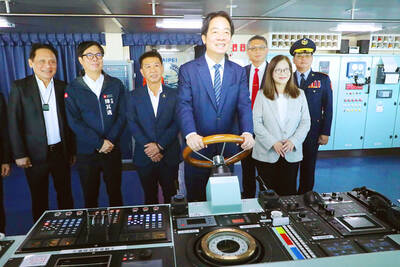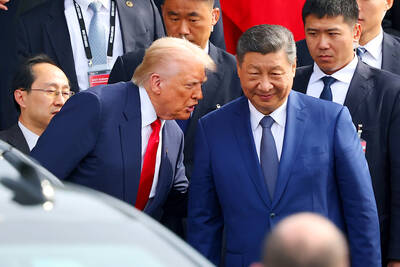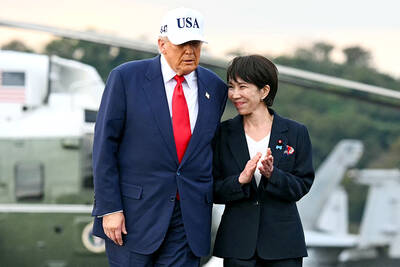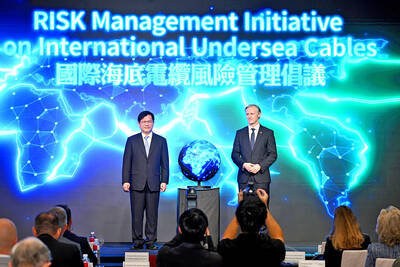Embattled Sony Corp said yesterday that Ryoji Chubachi was stepping down as president, adding to the string of Japanese companies hoping to fight the global slowdown with renewed leadership.
Howard Stringer, chairman and chief executive, will stay on, adding the presidency as another title after Chubachi steps down on April 1. Stringer said the change underlined Sony’s commitment to becoming more competitive and rebuilding its image as a technological pioneer.
“This reorganization is designed to transform Sony into a more innovative, integrated and agile global company with its next generation of leadership firmly in place,” Stringer said in a statement.
The Japanese electronics and entertainment company, which has been battered by the global slump and a strong yen, is projecting its first annual net loss in 14 years.
Chubachi, 61, became president in 2005, when Welsh-born American Stringer, 67, became the first foreigner to head Sony.
Chubachi will remain on the board as vice chairman, overseeing quality, safety and environmental policies.
“I look forward to supporting the new management team,” Chubachi said.
Among other changes was the appointment of Kazuo Hirai, the chief of Sony Computer Entertainment, the gaming unit, as head of the Internet-linking products and services group.
Both Chubachi and Stringer had promised a dramatic turnaround at Sony, the maker of Bravia flat-panel televisions, PlayStation 3 game machines and Cybershot digital cameras.
But the global slowdown — hitting during the key year-end shopping season — and the surging yen, which erodes foreign earnings, have proved too much. Sony is particularly vulnerable to overseas demand because exports make up about 80 percent of its sales.
Sony is expecting a ¥150 billion (US$1.5 billion) net loss for the fiscal year through March. That’s a reversal from a net profit of ¥369.4 billion the previous year.
The company has already said it is slashing 8,000 of its 185,000 jobs around the world and closing five or six plants — about 10 percent of its 57 factories. It is also trimming another 8,000 temporary workers who aren’t included in the global work force tally.
Stringer, who has acknowledged he had not gone far enough with cost cuts and efforts to combine entertainment with electronics, promised better times for Sony.
He said the various parts of the company’s sprawling businesses, which include movies and music, as well as gadgets, need to work better with each other.
The TV, digital imaging, home audio and video businesses will come together in a new consumer products group, he said, to boost profitability and growth by being faster with new products, according to Sony.
“The changes we’re announcing today will accelerate the transformation of the company that began four years ago,” Stringer said.
“They will now make it possible for all of Sony’s parts to work together to assume a position of worldwide leadership,” he said.

CALL FOR SUPPORT: President William Lai called on lawmakers across party lines to ensure the livelihood of Taiwanese and that national security is protected President William Lai (賴清德) yesterday called for bipartisan support for Taiwan’s investment in self-defense capabilities at the christening and launch of two coast guard vessels at CSBC Corp, Taiwan’s (台灣國際造船) shipyard in Kaohsiung. The Taipei (台北) is the fourth and final ship of the Chiayi-class offshore patrol vessels, and the Siraya (西拉雅) is the Coast Guard Administration’s (CGA) first-ever ocean patrol vessel, the government said. The Taipei is the fourth and final ship of the Chiayi-class offshore patrol vessels with a displacement of about 4,000 tonnes, Lai said. This ship class was ordered as a result of former president Tsai Ing-wen’s (蔡英文) 2018

UKRAINE, NVIDIA: The US leader said the subject of Russia’s war had come up ‘very strongly,’ while Jenson Huang was hoping that the conversation was good Chinese President Xi Jinping (習近平) and US President Donald Trump had differing takes following their meeting in Busan, South Korea, yesterday. Xi said that the two sides should complete follow-up work as soon as possible to deliver tangible results that would provide “peace of mind” to China, the US and the rest of the world, while Trump hailed the “great success” of the talks. The two discussed trade, including a deal to reduce tariffs slapped on China for its role in the fentanyl trade, as well as cooperation in ending the war in Ukraine, among other issues, but they did not mention

Japanese Prime Minister Sanae Takaichi yesterday lavished US President Donald Trump with praise and vows of a “golden age” of ties on his visit to Tokyo, before inking a deal with Washington aimed at securing critical minerals. Takaichi — Japan’s first female prime minister — pulled out all the stops for Trump in her opening test on the international stage and even announced that she would nominate him for a Nobel Peace Prize, the White House said. Trump has become increasingly focused on the Nobel since his return to power in January and claims to have ended several conflicts around the world,

GLOBAL PROJECT: Underseas cables ‘are the nervous system of democratic connectivity,’ which is under stress, Member of the European Parliament Rihards Kols said The government yesterday launched an initiative to promote global cooperation on improved security of undersea cables, following reported disruptions of such cables near Taiwan and around the world. The Management Initiative on International Undersea Cables aims to “bring together stakeholders, align standards, promote best practices and turn shared concerns into beneficial cooperation,” Minister of Foreign Affairs Lin Chia-lung (林佳龍) said at a seminar in Taipei. The project would be known as “RISK,” an acronym for risk mitigation, information sharing, systemic reform and knowledge building, he said at the seminar, titled “Taiwan-Europe Subsea Cable Security Cooperation Forum.” Taiwan sits at a vital junction on